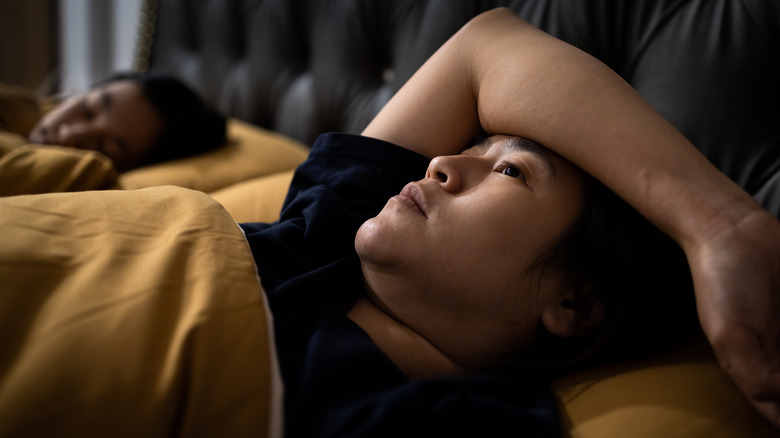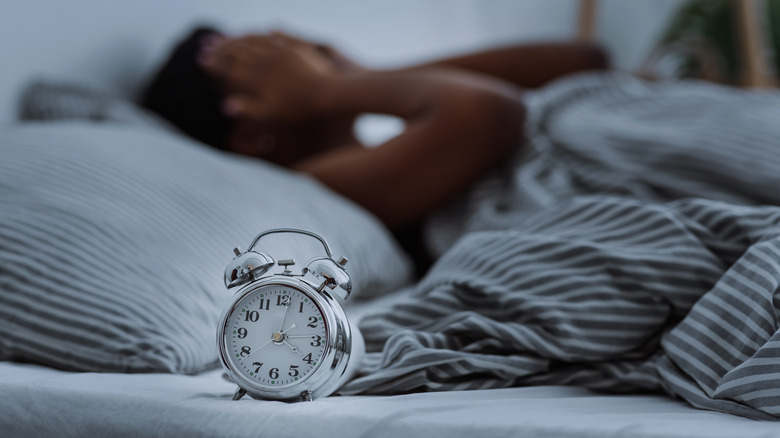What Is Restless Leg Syndrome
Restless leg syndrome (RLS), also called Willis-Ekbom disease, is a disorder characterized by the uncontrollable urge to move your legs (via Mayo Clinic). This typically occurs as a result of discomfort and tends to happen in the evening or nighttime hours when you are sitting or laying down. The feeling may be accompanied by sensations often described as tugging, throbbing, pulling, aching, itching, burning, or crawling, according to the Cleveland Clinic.
According to the Sleep Foundation, RLS affects between 5 and 10 percent of adults and 2 to 4 percent of children in the United States. The condition can come on at any age, though it tends to get worse as a person gets older. It can disrupt sleep, which can lead to fatigue and daytime sleepiness and affect overall quality of life. Since sleep deprivation is associated with depression, anxiety, obesity, and heart disease, people with RLS are at a greater risk of these health problems, as well.
What to do if you have restless leg syndrome
In most cases, the exact cause of RLS is not known, but sometimes a condition like anemia or pregnancy may bring it on (via National Institutes of Health). While sitting or resting are common triggers of RLS, certain substances are also known to bring on an episode. These include caffeine, alcohol, nicotine, and certain medications like those used to treat colds and allergies, nausea, and mental health conditions. If these substances are taken too close to bedtime, they are more likely to affect symptoms of RLS.
Following good sleep habits is a good first step to treating RLS. Ideally, keep your bedroom cool, quiet, and dark and try to go to bed and wake up at the same time every day. Aim for at least 7 hours of sleep each night. Some other lifestyle changes can also help relieve symptoms of RLS. These include taking warm baths, massaging your legs to relax the muscles, exercising regularly, applying warm or cool packs to your legs to lessen the sensations, and using a specially designed foot wrap for people with RLS that puts pressure under the foot. If RLS symptoms are severe and none of these lifestyle changes work, your doctor may prescribe medications to treat the condition.


